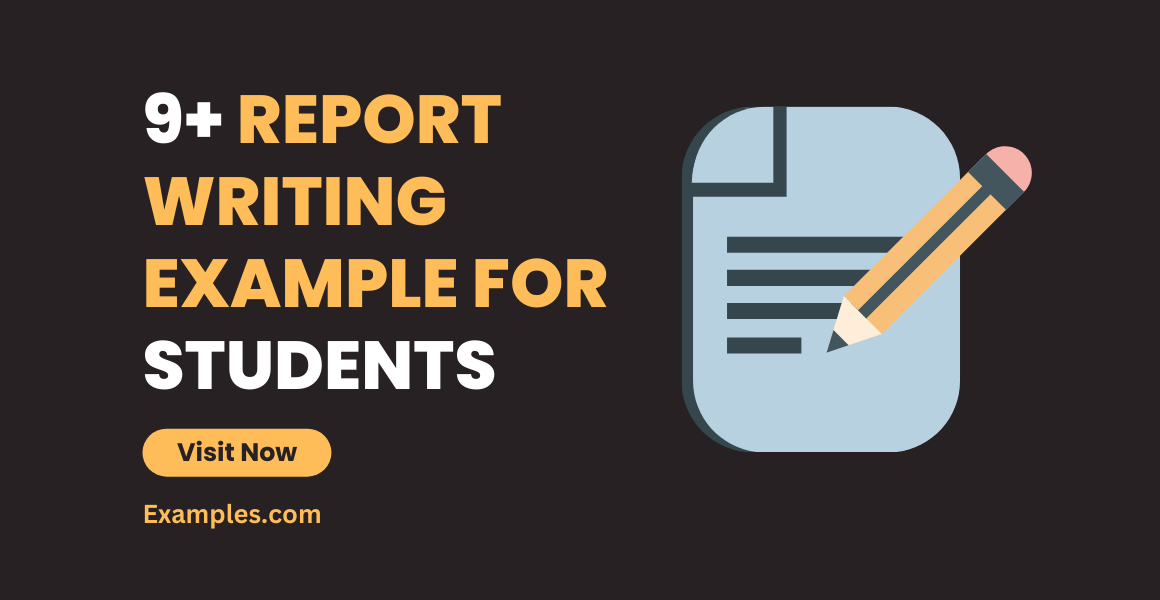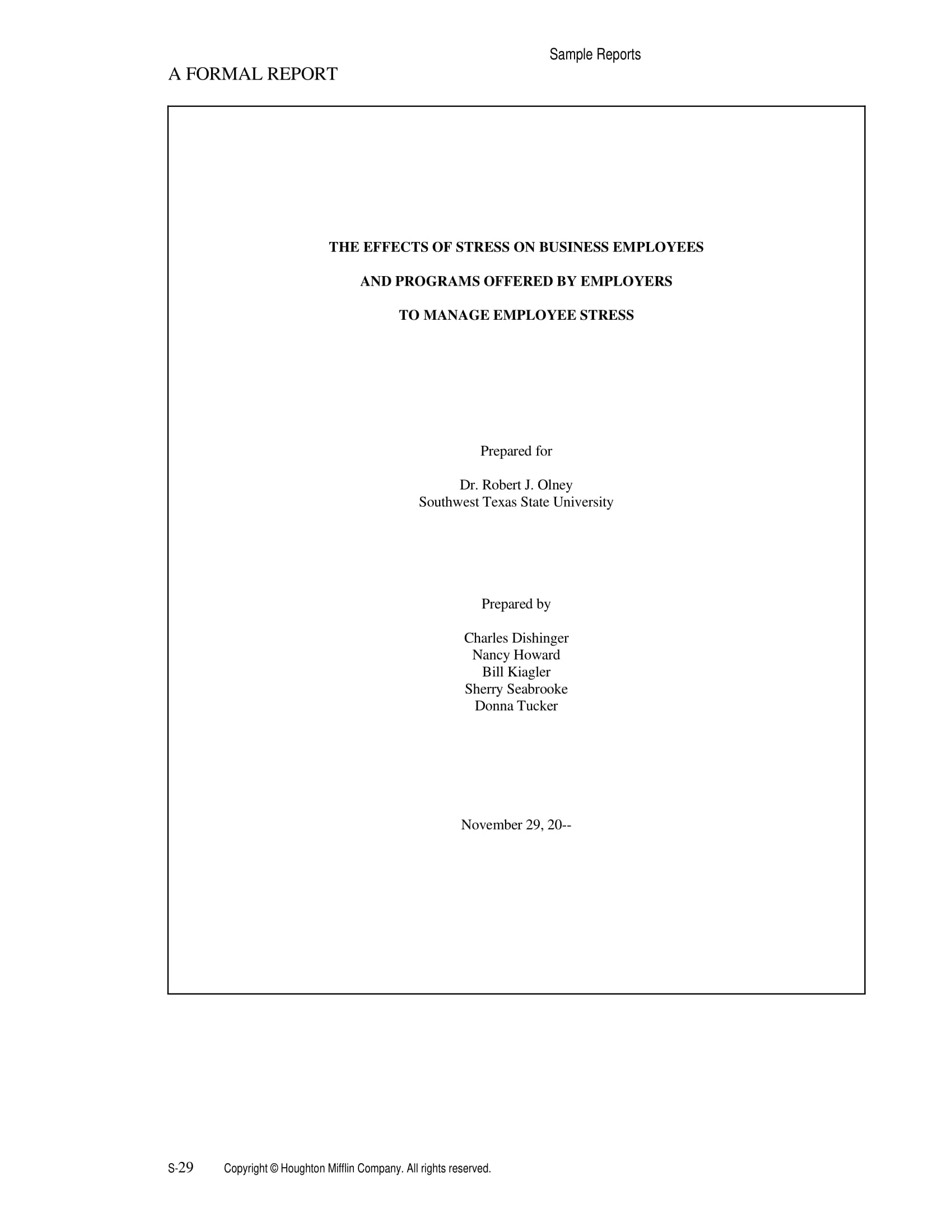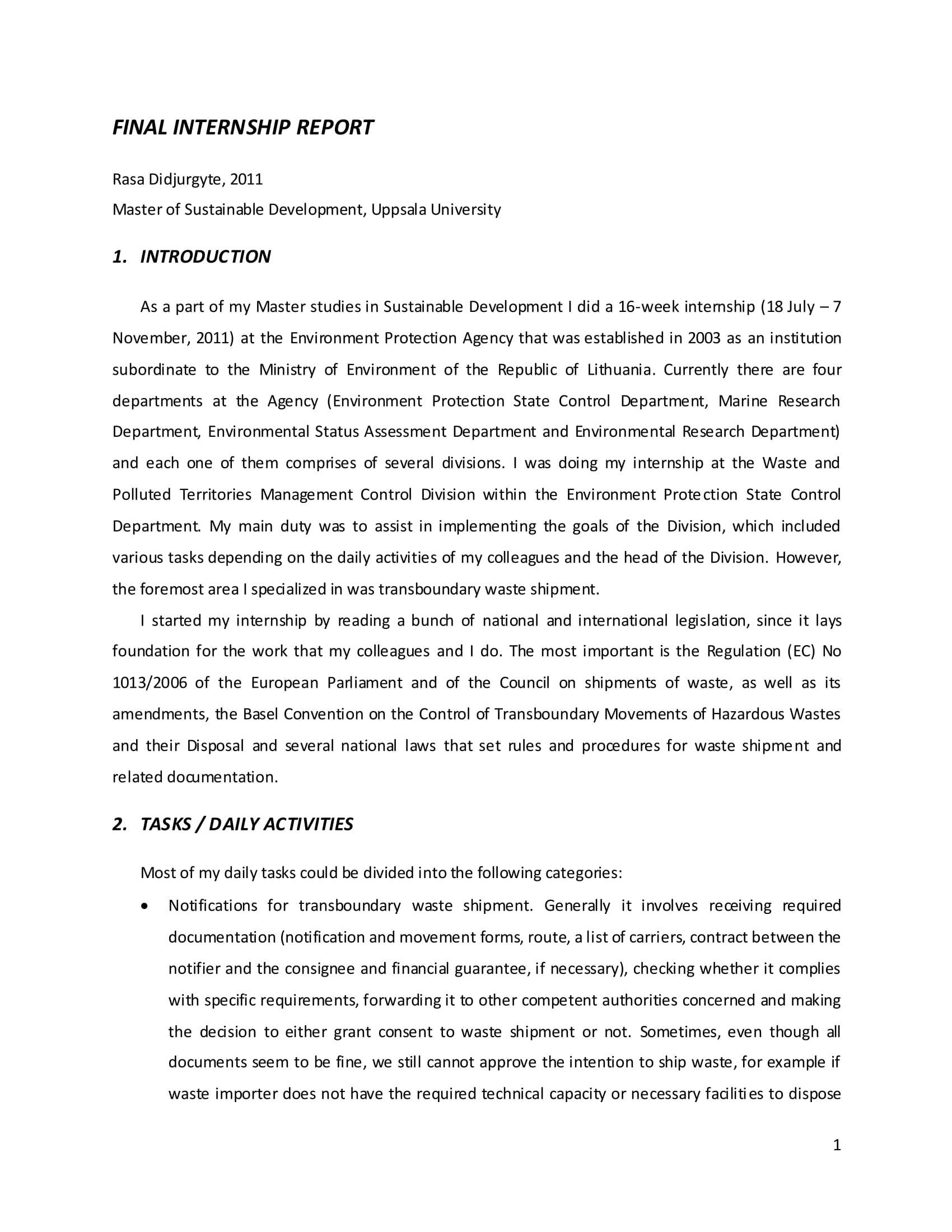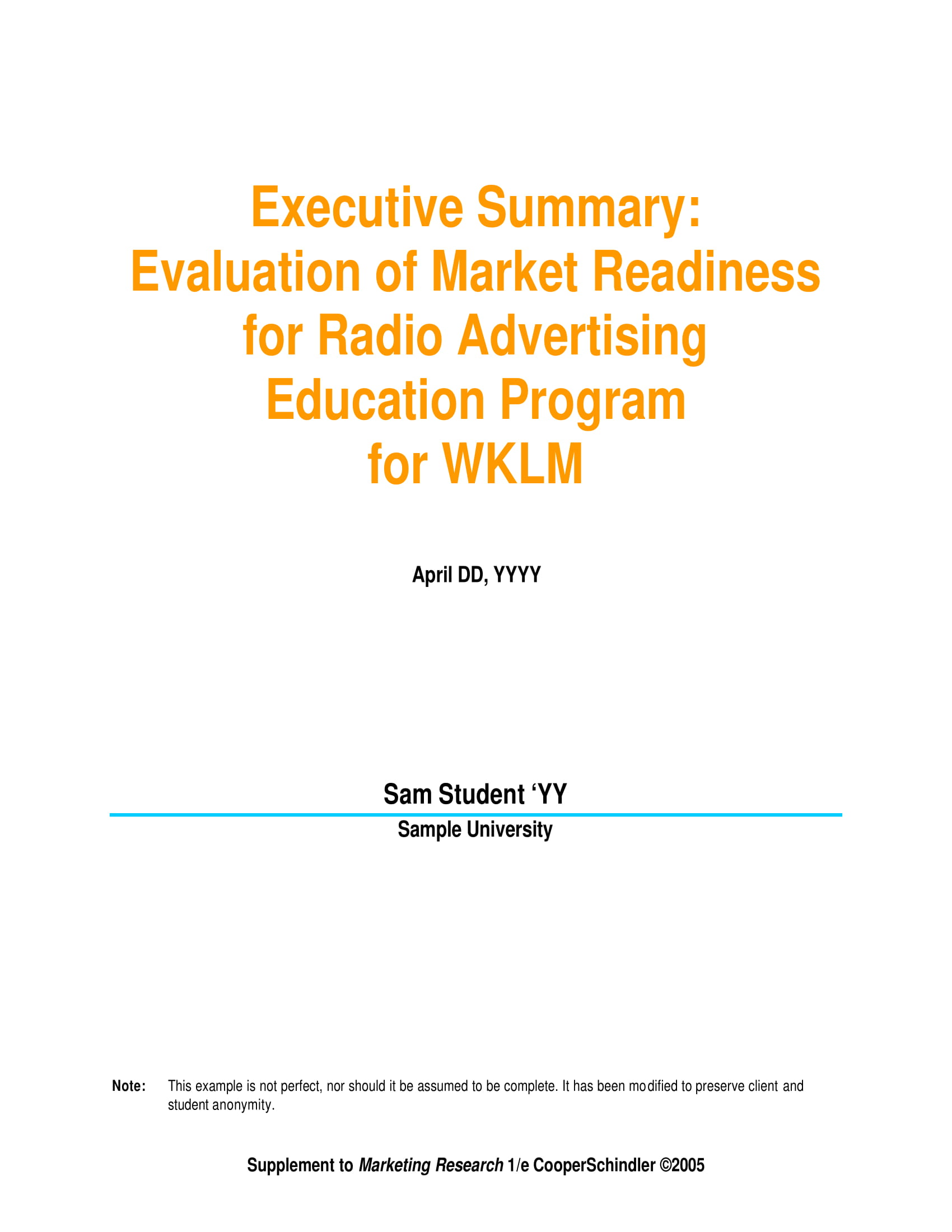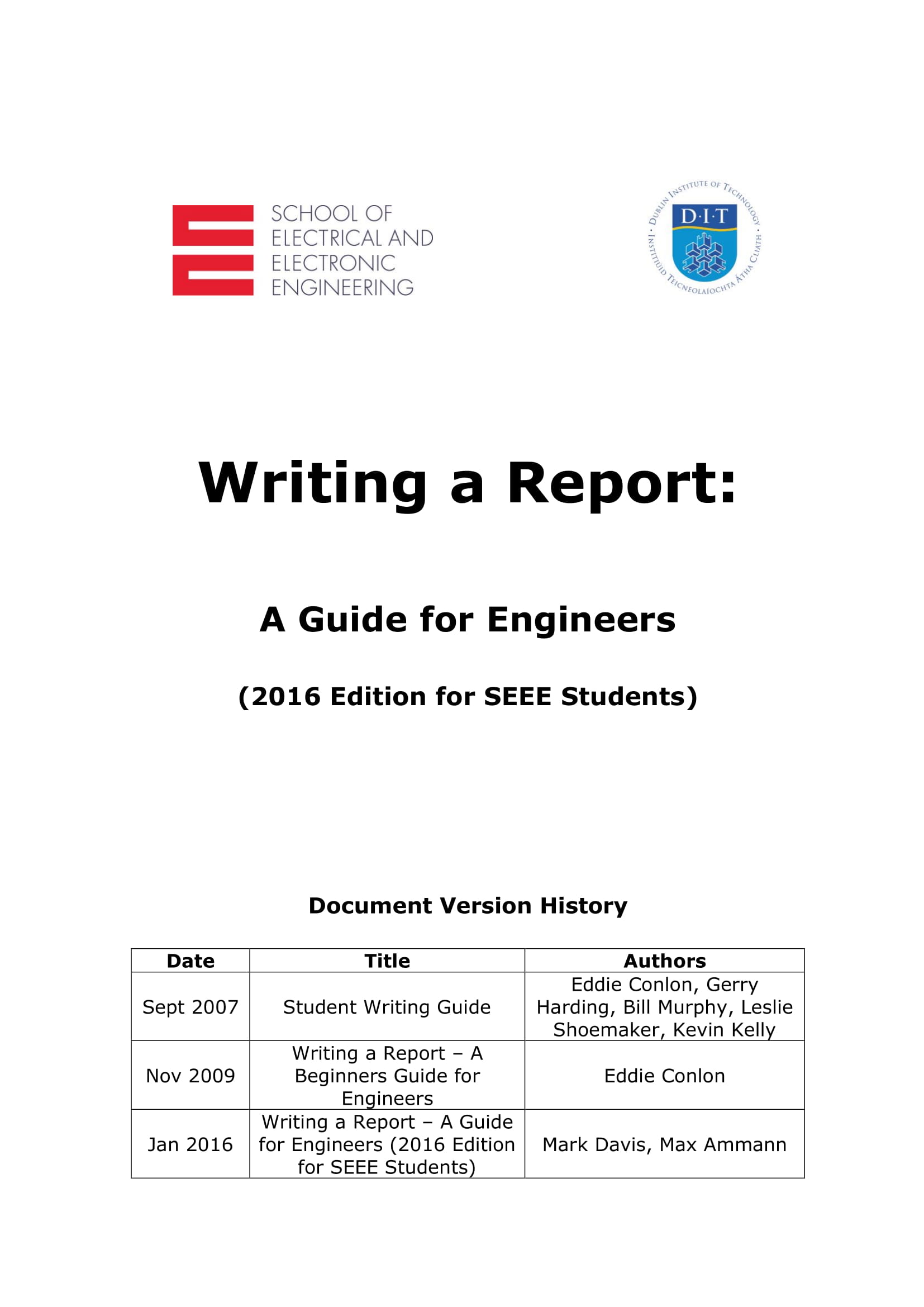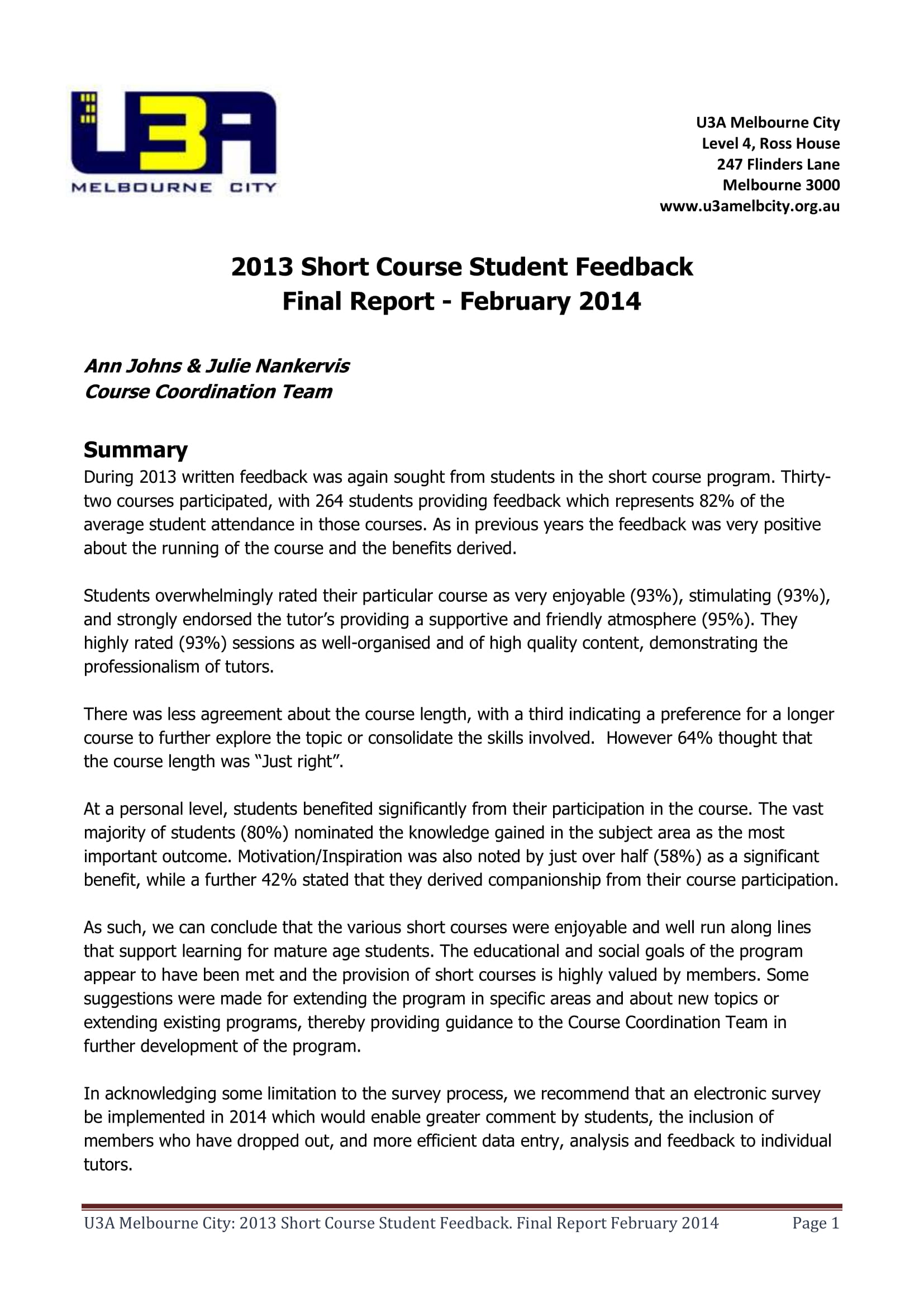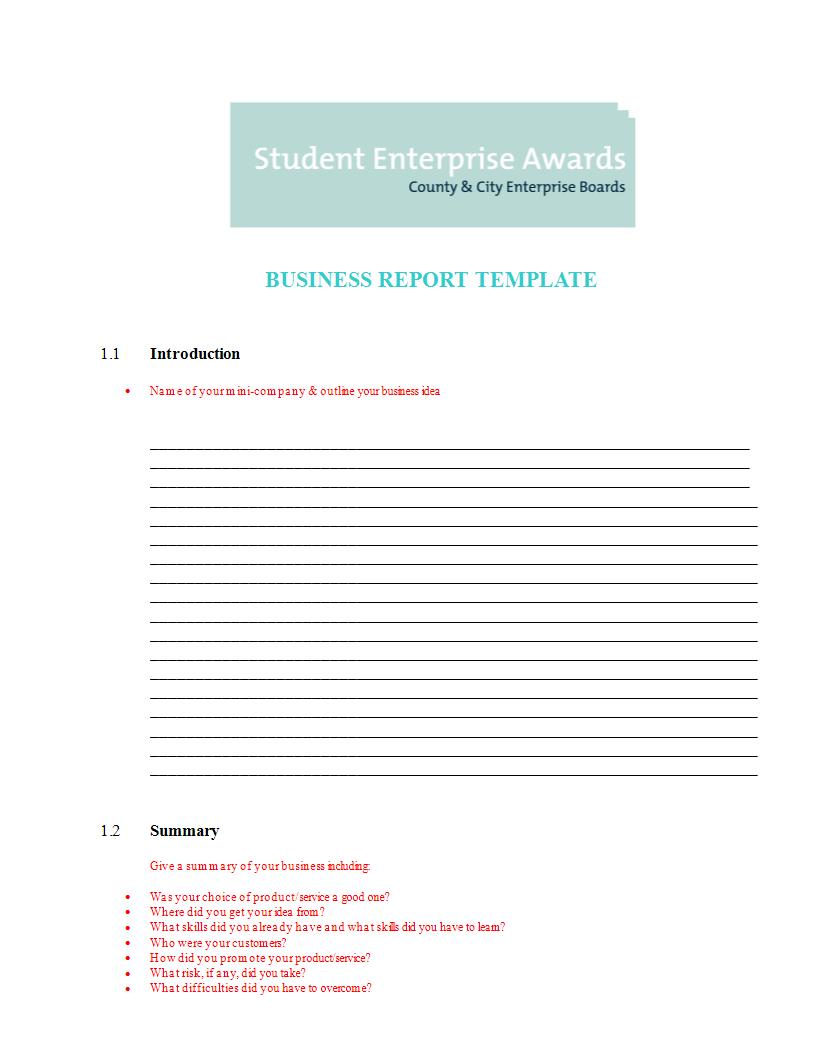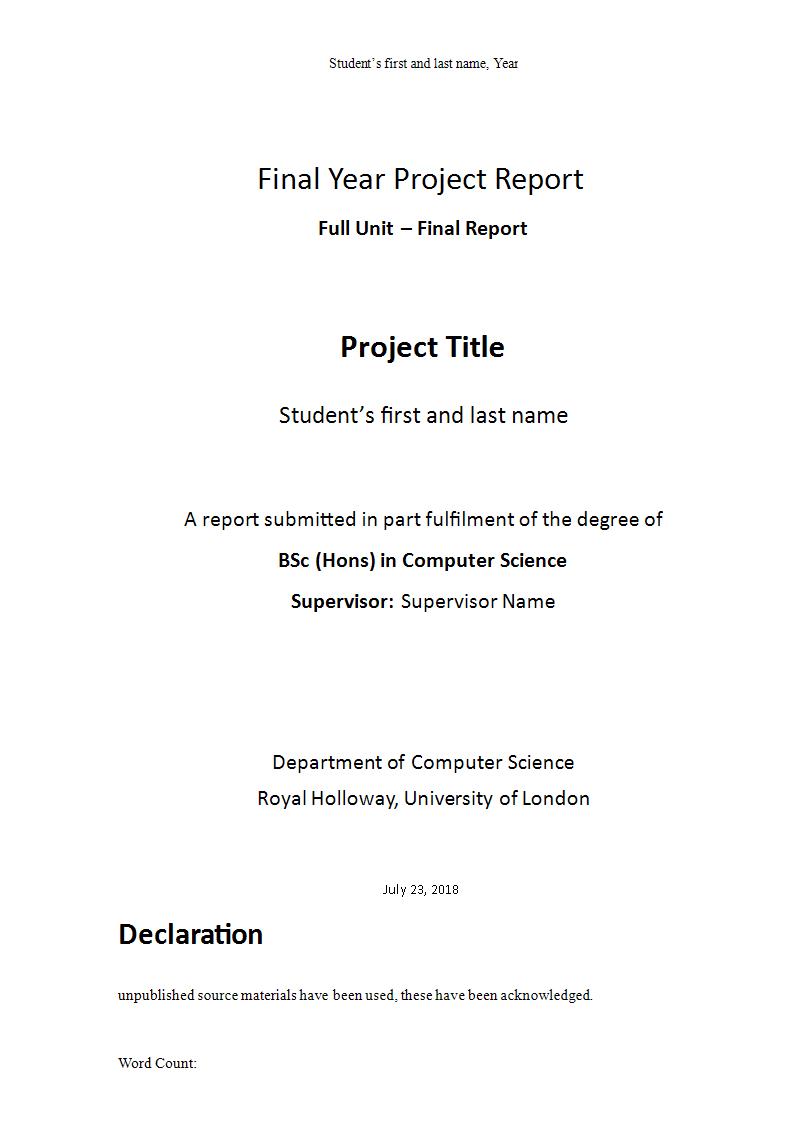16+ Report Writing Examples to Download
It is quite common in the academe to require students to write a report about certain topics. This means that students need to study and examine a certain topic in order to analyze which information are necessary to include in the report. It also means that students need to comprehensively present the topic so that his/her peers can easily understand the topic. It may be quite a dilemma for students, but the skills that they acquire during such exercise will be useful when they enter the corporate world.
You might get confused as to what report this guide is trying to discuss. To make it clear, this is not about writing a report card; this is about writing academic reports that may be a requirement for your subjects in school. By the simplest definition, academic report writing means any report writing assignment given in an academic setting. A report aims to spread information in a comprehensive and succinct manner. The report also presents evidence/s that supports the claims or relates to the issue being discussed in the report.
Regardless of the class or subject or topic your report is about, it has to be able to comprehensively present the issue along with the analysis; specific information and the relevant supporting details must be presented as well. Reports are usually tailored to fit a particular purpose and audience; therefore, you must take those into consideration before you go on and create an outline for the report. This guide will discuss necessary topics about report writing to help students out with their report requirements.

Typical Format of a Student Report
Before you start with your report, you must be able to determine and understand the contents that you need t include in your report as well as their specific purpose. Listed below are the typical contents found in a student or academic report:
- Letter of Memorandum – The letter of memorandum states the purpose of the report, brief summary and/or recommendations, and acknowledges others who have contributed. Usually given by person or group who commissioned the report.
- Title Page – The title page reflects the exact title of the report. It should clearly describe what the report is about and it should also include the name/s of the reporter as well as the date of publication.
- Abstract or Executive Summary – This part of the report states the problem, how it was investigated, what was found, and what the findings mean. This usually consists of approximately 200 words.
- Table of Contents – This contains a list of the major and minor topics discussed in the report along with the exact page number where they are located.
- Introduction – The introduction sets the tone for the entire report, and it also gives some background information about the topic. This part also states the aim/purpose of the report and outlines of the sections of the report.
- Main Body – The main body is organized into comprehensive sections that clearly discusses what was investigated, how it was investigated it, what was found along with the evidence/s, and interpretations of what was found.
- Conclusion – This section presents a summary of the entirety of the report. It also explains what was achieved by the report, the significance of the findings, and a discussion and interpretation of the findings.
- Recommendations – With the conclusion, a recommendation of what necessary or relevant action/s can be taken is included in this section of the report.
- References – This section lists all the references, i.e., relevant books, magazines, scholarly journals and studies, etc., used as reference for the report.
- Appendices – Other information that has not been included on the body of the report; for example, graphs, charts, tables, or other data.
Free Student Report Card Template
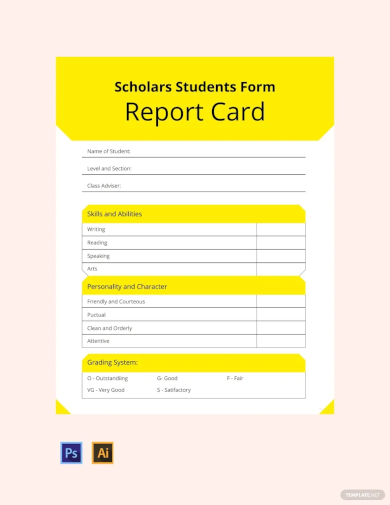
Sample Student Progress Report Template
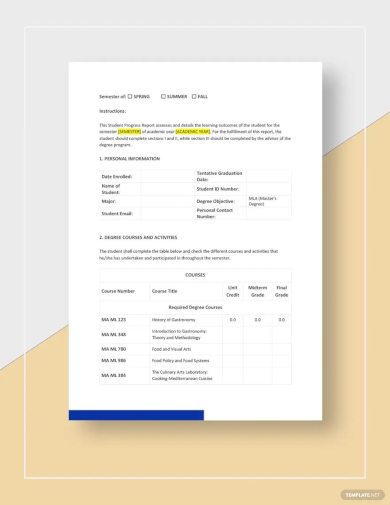
Student Internship Report Template

Student Performance Report Template
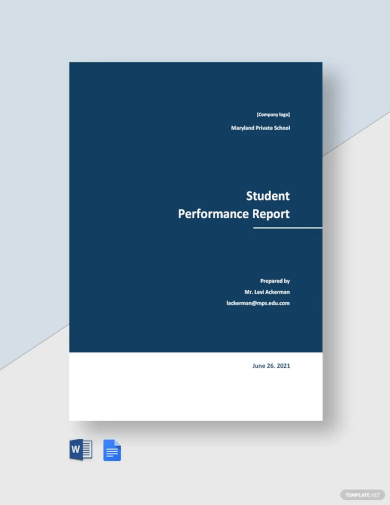
Student Progress Report Card Template
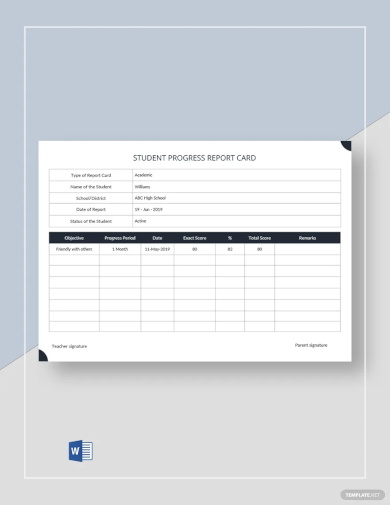
Simple Student Progress Report Card Template
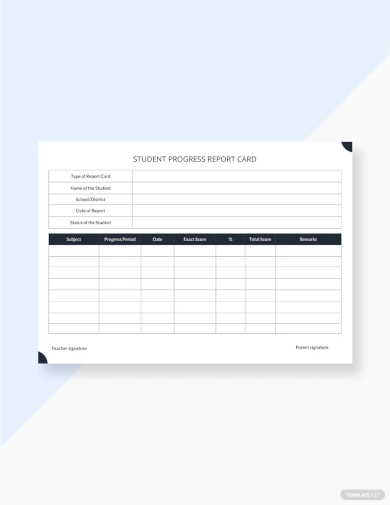
Free Student Accident Report Template
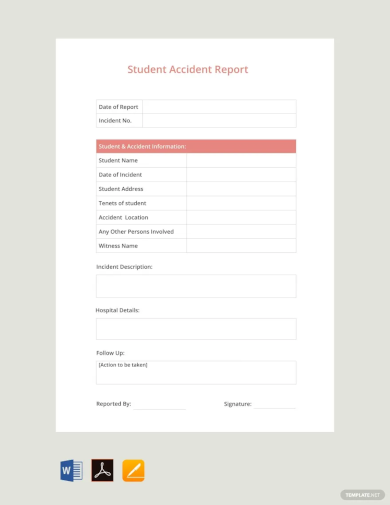
Formal Student Report Example
Final Student Internship Report Example
Student Project Report Example
Engineering Students Report Writing Guide Example
Student Course Feedback Report Example
Importance of Report Writing to Students
Academic writing, specifically report writing, has played a huge role in shaping and developing students. It is a constant exercise in the academe and students usually dread this when being required to do so. However, there are advantages when making reports. Here are some of the reasons why report writing is important and useful to students:
1. Teaches students to analyze
Writing academic reports teaches students to analyze and breakdown the topics into comprehensive and logical sections. It also teaches students to understand the topic down to the simplest detail. It also teaches the students to go beyond merely describing the topic; it urges them to think about why it has been carried out and which uses its findings may have for the future. This allows them to fully take in what they have studied and decide on what these details hold in their report.
2. Allows students to convey their understanding
Since students develop their analyzing skills, writing reports also allow students to convey what they have understood based on their analysis. Reports generally present what the students were able to understand on the topic they have at hand. And since they were able to analyze the topics, they are urged to simply and clearly relay their understanding on the complexity of the topic. More specifically, reports are written to make complicated topics into simple presentation of data, thus, challenging and allowing students to clearly present what they have comprehended in an organized and comprehensive manner.
3. It has a strong focus on technique and style
Academic reports focus on the technique/s and how it should be used to best convey ideas. Reports generally follow a specific style and approach. Thus, it encourages students to stick to such standards. In return, if students learn and master such styles and techniques, it will be easier for them to make reports should their future job require them. It strengthens their writing and organization skills as well as their manner of presentation, which can be very useful when tasked with presenting reports and ideas during employment.
4. Teaches students to think critically and objectively
It teaches students to look at the both sides of the argument. Studying for the report and writing the report itself teaches students to always leave room for argument, it forces them to look at ideas and study different perspectives. Since they are forced to analyze the information and data that is given to them, they are also forced to critically and objectively look at those data in order to present them without bias. This will help them develop such skills that can help them as they go on about their lives.
Formal Student Report Template Example
Simple Student Report Example
Student Business Report Template Example
Student Practical Training Report Example
Final Year Project Report Example
Essential Stages in Writing a Report
As all reports, academic reports need to be clear, concise, and well structured. When you are assigned to make a report for a class, you need to allocate time for planning and preparation. With that in mind, here are the essential stages in writing an effective report:
1. Understanding the report brief
This stage is the most important one. Before you start writing your report, you need to be confident that you have clearly understood the purpose of your report. Your report brief generally contains information relevant to your report; for example, the topic of your report, purpose, who it is written for, as well as the general instructions for the report writing. If there are matters that come off as unclear to you, do not hesitate to ask your teacher or instructor.
2. Gathering and selecting information
Since you generally have a clear understanding of what your report is about, you should start gathering the data that are relevant to your topic. This also means that you have to carefully select the data to include since you really can’t include everything that you think is related to your topic. This also means you need to be able to determine and identify the most significant and most relevant information to include in your report. With this, you will have to read on relevant literature in order to widen your understanding of the topic before looking into other forms of information such as questionnaires, surveys, etc.
3. Organizing your material
After gathering and selecting the information you include in your report, you have to be able to organize those information in a way that is is easy for your audience to understand. You should be able to determine what sequencing of the information is more cohesive and understandable. You can start by grouping together points that are related; this may result to the formation of sections and chapters. However, you need to remember to keep on referring to your report brief and cut out other information should you see fit.
4. Analyzing your material
Now that you have a somewhat clear representation of your report, you have to make sure everything you have included and outlined are relevant and necessary. Before you make the first draft of your report, take time to consider what you have on hand and make sure the points you offer are backed up with enough facts and evidence. What conclusions can be drawn from the material? What are the limitations or flaws in the evidence? Do certain pieces of evidence conflict with one another? Remember that your report must go beyond simply presenting the information you have gathered, you have to also relate it to the problem or issue described in the report brief.
5. Writing the report
After making sure that your report outline and what you have included in your outline are relevant and significant to the topic of your report, you can proceed to writing the report. You have to aim for a writing style that is direct and precise, and avoid babbling; make sure your make your points clearly and concisely. Everything must be written with a clear structure, the chapters, sections, and even individual paragraphs.
With this in mind, you need to introduce the main idea of the chapter/section/paragraph, explain and expand the idea, defining any key terms, present relevant evidence to support your point/s, comment on each piece of evidence showing how it relates to your point, and lastly, conclude each chapter/section/paragraph through showing its significance or relevance to the report as a whole or linking it to the next chapter/section/paragraph.
6. Reviewing and redrafting
After you write the first draft of your report, you should definitely review your draft and make sure everything is cohesive, comprehensive, and logical. You need to remember that although your topic is complex, you need to be able to clearly explain its entirety in a brief manner. After being satisfied with your review, you can start redrafting to make sure your report fits the general instructions stated in the report brief. Aside from that, this is the time you make sure your report is easily understandable to your specified audience.
7. Presentation
You can turn your attention to the presentation after you are satisfied with the overall content or after your redrafting. You have to make sure that there are no misspellings and other errors in your chapter/section/subheading. In addition, you have to make sure that everything is clear and accurate. Check for consistency in numbering of chapters, sections, and appendices. Errors, be it the smallest detail, can leave a negative impression to your audience.


